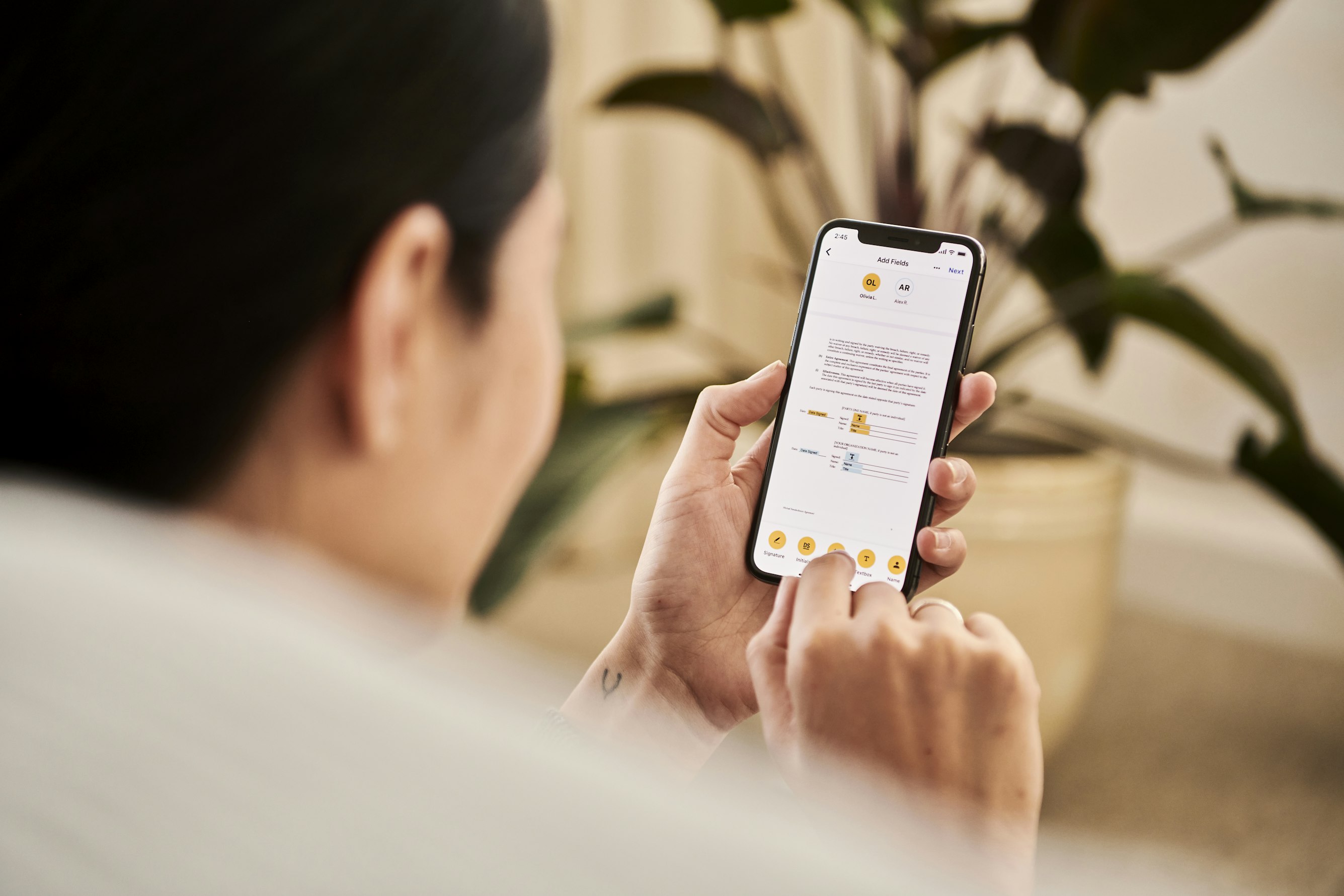If you want to make your mobile app stand out in the fierce competition of the app world, try to make it as accessible as possible. In this blog, we have gathered some best tips to create accessible native mobile apps!
Ease of use is the crucial factor that decides the success of any mobile app. Many apps get criticized for lacking in this factor.
But why does this happen when the app is designed for customers’ ease?
This is because the developers sometimes ignore the accessibility feature while creating the apps. Consequently, such apps disappeared just a few days after launch on app stores.
No matter how different your idea is, if your app is not user-friendly, the chances of app abandonment from the audience are high. This means app accessibility is as important as your app idea. But what exactly does mobile app accessibility provide?

The completely accessible applications give access to everyone, including disabled people. Disability can be hearing, visual, mobility, or even illiteracy. So, to have a completely accessible app, you should incorporate the following features:
- Your mobile app should be easy to understand and navigate.
- It should have easy-to-click and visible buttons.
- There should be a double confirmation button before finalizing any important task.
- The animation should be clear, intuitive, and slow.
- Text color and background color should have a proper balance.
A native mobile app should have all such features. Now the question is, how will you achieve all this in the application?
It’s easy, if you pay a little attention while developing the app. With the tips given below to create accessible native mobile apps, it will become easier for you.
So, without further ado, let’s get started!
How to Create Accessible Native Mobile Apps: Best Tips!
1. Try to make navigation easy and simple
If you want to make your native mobile app highly accessible, making the navigation process simple and easy is crucial. To achieve this, you can follow the given points:
- Place the action button far away from the page content.
- You should not put URLs and controls in order with the content of the screen.
- You should display the action button clearly with the help of bold text, colors, and underlines.
- A warning message for users when any action takes the user outside the app.
If you make your platform easy to navigate with such steps to make it an accessible native mobile app, you can win your audience.
2. Take care of color contrast
If you want to create native mobile apps that are easy to read, having a balanced color-contrast ratio is essential. An improper color contrast ratio makes your content difficult to read, especially for color-blind users.
As per web accessibility guidelines, you should use a color contrast ratio of 4:5:1. A Different contrast ratio for bigger text (3:1) is good because at lower contrast wider texts are easy to read and understand. These things will make your app more accessible in two ways:
- It will enhance visibility for the visually impaired, such as color-blind users.
- It makes the touch screen easy to read even in bright sunlight.
Apart from this, it helps to maintain a good color contrast like using light text on a dark background and vice-versa.
3. Keep in mind the size and style of the font
Not only color but also the size and style of the font play an important role in making your native mobile apps accessible. Many people may find stylish and unique font styles attractive, but they may not be readable to many. What is the use of your platform’s content if everybody can’t read it?

So, you need to select the font size and style very carefully. Never use cursive scripts that may confuse people, especially people with vision problems or dyslexia.
Some important things that you can follow to achieve easily readable content:
- You should maintain line spacing 1.5 times more than the paragraph’s width.
- You should maintain at least one space between letters.
- Try to use simple fonts to improve text understanding.
4. Include native capabilities
While designing an application, taking the benefit of native capabilities is good. This issue occurs when companies convert a website experience into a mobile experience.
Consequently, it looks like a forced design and reduces the point of accessing the mobile app experience on mobile devices. That’s why companies should expand the experience of a mobile app by identifying native components.
These native components enable features to allow correct functionality, especially when users interconnect with the accessible tools while operating the mobile app.
Such components help the mobile app to adjust automatically after enabling OS-level settings. Just ensure to use the components considered to maintain the coherent flow that allows accessibility.
5. Testing is crucial
Testing is a vital step that shouldn’t be missed at any step of the app development process, whether it’s native, web, or hybrid mobile app development. Doesn’t matter how much experience a developer has that you have hired; your native mobile apps should be thoroughly tested.
Before the launch of the application, testing is necessary to be sure about the quality and accessibility of the end product. But how will you do the thorough testing?
The points to take into consideration are easy to follow yet important:
- Check if the accessibility techniques and tools are correctly implemented.
- If you want to check accessibility for the disabled, you can conduct surveys in colleges or universities. Or you can gather the disabled people and ask them to check if your mobile application is accessible or not.
- You can also test your app with voiceover.
6. Easy and simple data entry
Entering data can be a difficult and time-consuming task for many consumers. So, you should provide alternatives that make this work simpler and quicker. You can make your mobile app easy for specially-abled people if you change the style of entering data. Try to follow some given steps to do the same:
- On-screen keywords and speech are good options to make text entry simple.
- You can decrease the number of text inputs into your mobile app.
- You can integrate different choices like drop-down menus, auto-filling, or checkbox options.
This tip will surely improve the user experience and accessibility of your application as everybody can handle the data easily.
7. Have more than one communication ways
If you provide limited communication ways for your users to connect with you, you may lose chances of getting contacted. Maybe some users like to connect over calls, while some may like to connect through chat.
Hence, try to create a native app that includes multiple communication paths. If any type of user can interact with you through the medium they like.

You can also consider many other aspects like screen designing, color changing, voice-over support, etc. These varying options can make your app’s communication enjoyable and easier.
8. Keep simple gestures
You very well know that mobile apps are operated via gestures on the touch screen. You should keep them as simple as possible. If your app has complicated gestures, it will be very difficult for the disabled to operate and control the app.
To make application accessibility simpler, you can consider the given:
- You can use simple swipe or tab gestures.
- Your back menu should be visible clearly.
- Personalized gestures can bring great support for the disabled to use your platform.
9. Keep layouts and templates simple
Complicated interfaces make it difficult for users to access your mobile app. So, you should maintain consistency on different screens to make it easy for people to use similar functions. You can maintain consistency in layouts by using standard fonts and color themes on different screens.
For example, a native mobile app should have a logo, title, and navigation bar at the top of each page. All the elements should be in the same order and position to avoid confusion for special people.
If you want to build a hassle-free cross-application experience, consistency is the main base of it. This way, users will feel comfortable and can easily control the tasks in the app they are operating. This is especially helpful when a user starts your application on one device and ends on another one.
Conclusion
Having an accessible native mobile app is the major aim of every developer. Whenever you create native mobile apps, keep disabled persons in mind and then go ahead with the development work.
If you want to tap your target audience, accessibility is the key to achieving this seamlessly. Everybody is well aware of the fierce competition in the app market, and if you want to beat this crowd, your app should work for all. All the given tips will surely help you to create accessible native mobile apps. Lastly, take care of all the accessibility standards, and you are ready to build an accessible app.
Still have questions in mind? Feel free to ask us about mobile app development. Hope you find this blog informative!



